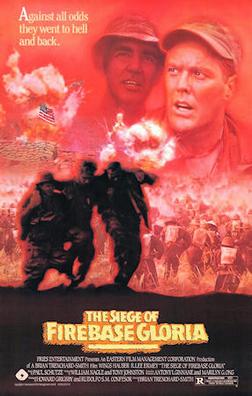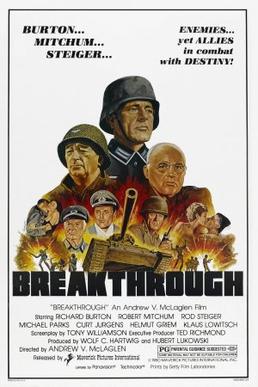One of my favorite books is Guts
and Glory by Lawrence Suid. The book
is about the military’s cooperation with Hollywood. A theme of the book is that the military is
very protective of its image and will not cooperate with movie producers if it
feels the movie has even a slightly negative portrayal of the military. Why does Hollywood care? Because producers save a lot of money if it
has access to military equipment and sites.
This adds verisimilitude to the movie.
But with military cooperation comes strings. The Pentagon must vet the script and approve
it in order to grant access. Almost
always the military asks for changes in the script. It is up to the producers to decide whether
the cooperation is worth the changes. Common
reasons for nixing a script include profanity, which is of course ridiculous
because soldiers swear and the public knows this. Another is when officers are depicted in a
negative way. The military is also
concerned with unrealistic procedures.
Obviously it frowns on atrocities being depicted. Why does the Pentagon give out free
stuff? Because war movies can be good
for recruiting. “Top Gun” is the classic
example of this. That was some major
cooperation and boy did it pay off for both sides! On the other end of the spectrum was “Crimson
Tide”.
“Crimson Tide” was a Jerry
Bruckheimer and Don Simpson production.
It was directed by Tony Scott.
This is the same team that made “Top Gun”. They hoped for the same level of cooperation,
but did not get it. The screenwriter Michael
Schiffer did his research and talked to a lot of captains. The ex-skipper of the USS Alabama, Skip Beard, was the technical adviser. However, the
Navy was upset with several aspects of the submitted script. As usual, they did not like the profanity,
but that was not a deal breaker. The
biggest problem was the mutiny scenario.
The Navy is very protective of its “we’ve never had a mutiny”
record. Some of the procedures were also
questioned. Since the “adjusted”
procedures were crucial to building suspense and the mutiny was the key to the
plot, the filmmakers refused to make significant changes. Simpson/Bruckheimer had to use a French
submarine and Scott managed to get a helicopter shot of the actual USS Alabama
submerging after leaving Pearl Harbor.
The interior scenes were a mock-up on a huge hydraulic gimbal, so no
problem there.
The movie is set in the
post-Cold War period, but could easily fit into the Cold War subgenre. It opens with a title card that
proclaims: “The three most powerful men
in the world: the President, the
President of the Russian Republic, and the captain of a U.S. nuclear missile
submarine.” In Chechnya, a Russian
ultra-nationalist named Radchenko calls for war with the U.S. because of
American sanctions. He seizes some
nuclear missiles and some of the military is in his corner for an attempted
overthrow of the government. Meanwhile,
the USS Alabama (a nuclear missile submarine) is welcoming a new executive
officer. Capt. Ramsey (Gene Hackman) has
picked Lt. Commander Hunter (Denzel Washington) because of his resume, but it
is obvious from the start that there will be the submarine cliché of dysfunctional
command. The two men’s philosophies
differ. Ramsey is basically old
school. He reminisces about the good old
days when you just pushed the button without asking why. Hunter is from the new breed who asks
“why?” He’s an intellectual who says
things like: “In the nuclear world, the
true enemy is war itself”. They remind
of the two types of captains that existed in the Royal Navy in Nelson’s time. Ramsey is the strict disciplinarian whose
word is law. Hunter is the humane leader
who takes the crew’s welfare into consideration. One believes in a kick in the ass, the other
in a pat on the back. It was possible in the Royal Navy to be
either and be successful.
The men are locked in to their
archetypes when a fire breaks out on the sub.
Hunter deals with the danger to the crew and Ramsey calls for a drill
immediately after the fire to test the crew’s ability to deal with a
crisis. In the ensuing “discussion”,
Ramsey makes it clear he will not brook any second-guessing from Hunter. While this personality clash is taking place,
the world is careening towards nuclear war. Radchenko is threatening to use his
nukes. When he begins to fuel them up,
the Alabama receives orders to launch its missiles. Before this can be done they are attacked by
a rogue Russian sub and they receive a follow up message that is interrupted by
failure of their radio communications.
Hunter insists the message may be a cancel order and refuses to concur
with Ramsey’s decision to launch anyhow.
The missiles cannot be launched unless both men agree. They don’t and hence the suspense. Keep in mind there is still an enemy sub
lurking around. Queue the clichés of a threatening
leak and a trip to “crush depth”. Throw
in a mutiny that devolves into shirts versus skins with weapons in a metal tube
underwater with a possible nuclear war starting above.
“Crimson Tide” is cracking
entertainment, but not so great for recruiting.
It’s easy to see why the Navy preferred “Top Gun”, but not so easy to
understand why the public preferred it.
This movie is much better than “Top Gun”. The acting is top notch from a great
cast. Hackman is too old for a sub
captain, but age has never been a factor in casting for war movies. John Wayne in the “Green Berets”, Robert
Mitchum in “The Winds of War”, and the list is endless. He is perfectly cast as the Queegish captain,
but he has not lost his marbles. In
fact, one of the strengths of the screenplay is that Ramsey may be right about
the launch. Washington is also well cast,
but his Hunter is clearly meant to be in the right. Another example of Hollywood being liberal,
some would say. It is fun to watch the
two great actors as adversaries and in tight spaces at that. They are given high-level dialogue to chew
on. Some of the pop culture references
in the script were written in by an uncredited Quentin Tarantino. This is the only submarine film with a
discussion on Lippizaner stallions.
The plot does not really
reinvent the sub subgenre. It has
several dusty tropes that might have seemed new to a 1995 audience. Once the enemy sub arrives, the action gets
increasingly preposterous as each crisis tops the last. Hell, there are two takeovers of the
boat! Some of the crew actions make
little sense, but it’s all for the greater goal of entertaining the
masses. This also can be said of the
plot devices that defy U.S. submarine logic.
For instance, when a boomer would receive launch orders, the exec would
have to confirm the order, but would not have to concur with the captain’s
decision. No conflict, no movie – so
let’s not quibble about that. If the
movie had stuck to Navy protocol, Hunter would have been shot and the crew
would have unanimously backed the captain.
Every captain Schiffer interviewed claimed he would have launched. That is scary since the second, incomplete
message would likely be a change in orders!
Speaking of which, Russian nukes don’t have to fuel up to be ready to
launch so no clock-ticking. And
torpedoes don’t need a thousand yards to arm.
And subs have a back-up radio, of course. And anyone who has watched a
submarine movie knows they can go well below crush depth. None of those turned me off.
The movie may not be factually
sound, but it is technically sound. It
was nominated for three technical Oscars.
The interior and underwater effects are excellent. The interior is authentic and the use of a
gimbal gives a feel for being on a sub.
The torpedo scenes are among the best.
Hans Zimmer’s score enhances the action and he won a Grammy. That is unusual for a score that was not even
nominated for an Oscar.
“Crimson Tide” is among the
better submarine movies. It takes the
tired captain versus exec cliché, but is thought-provoking because if you think
about it (and I’m not sure we are supposed to), both men could be right and
both could be wrong. When you watch it,
cut Ramsey some slack.
GRADE = B



